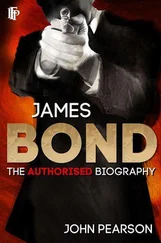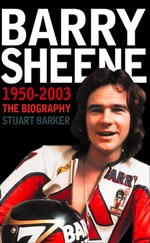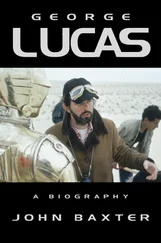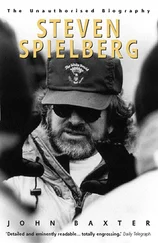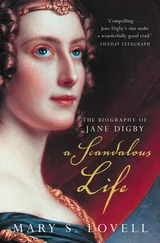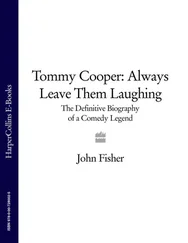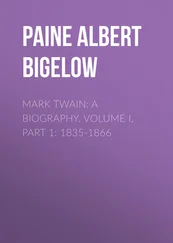Hofmann’s classes that year also included a lively young woman from Dalles, Oregon. Even in a community where women were accustomed to speaking out and being heard, Virginia Admiral’s voice was confident and committed. A Communist from her teens, she’d joined the Trotskyite Young People’s Socialist League on the Berkeley campus of the University of California, and led its clashes with the Stalinist Young Communist League.
Admiral’s closest friend on campus was Oakland-born poet Robert Duncan – ‘a strikingly beautiful boy,’ remembered the writer Anaïs Nin, ‘who looked about seventeen, with regular features, abundant hair, a faunish expression and a slight deviation in one eye, which made him seem to be looking always beyond and around you.’
Already an outsider by virtue of his homosexuality, Duncan joined Admiral’s radical circle, which also included Pauline Kael, future film critic of the New Yorker. At Admiral’s urging, he quit obligatory Reserve Officer Training Corps military training, and eventually left UCLA altogether for Black Mountain. Politically advanced for the time, Black Mountain’s faculty still wasn’t sufficiently so for Duncan, who, after an argument with the administration about the Spanish Civil War, quickly exited, accompanied by his new lover, one of the instructors.
In 1939, Admiral decided to abandon literature for art. Her mother, fearful that she would never be able to support herself, demanded she at least earn a teaching credential before plunging into bohemia. Virginia acquiesced, but only if she could study at Columbia in New York. Her mother agreed, provided she live at the college’s International House, in effect under supervision. Once in New York, Admiral did enrol in a teaching course of sorts, though it was a Masters programme in Art Education, which gave her plenty of opportunities to paint.
By then, Robert Duncan was living in Woodstock, New York, on ‘Cooney’s Farm’, a commune-cum-artists’ colony run by James Cooney and his wife Blanche. An enthusiast for D.H. Lawrence, Cooney published the Phoenix , a magazine dedicated to Lawrence’s work. The farm was a log cabin in the woods; guests bunked down in the old woodshed. Admiral spent time there in 1940, and, with Duncan, edited the first and only issue of the literary magazine Epitaph , which would evolve into Experimental Review.
Among Cooney’s visitors was Anaïs Nin. Eroticist, fabulist, lover and muse of Henry Miller, who dedicated Tropic of Cancer to her, the small, dark and seductive Nin had fled from Nazi-occupied Paris with banker husband Ian Hugo, and was now cutting a swathe through New York literary society.
Nin didn’t think Virginia sufficiently awed by her tales of wild times in Paris. ‘Virginia and her friends dress like schoolchildren,’ she wrote pettishly in her diary. ‘Baby shoes, little bows in their hair, little-girl dresses, little-boy clothes, orphan hats, schoolgirl short socks; they eat candy, sugar, ice cream. And some of the books they read are like schoolchildren’s books; how to win friends, how to make love, how to do this or that. They prefer the radio, the movies, recordings, to hearing experiences directly. They are not curious about people, only their voices over a machine and their faces on the screen.’
After the farm, Virginia taught for six weeks at a summer camp in Maine. By the time she returned to New York, the tuition money borrowed from her father had run out. Quitting college, she settled down to paint, supporting herself by waiting tables in Greenwich Village, and sharing a loft with two friends on 14th Street, above Union Square, for a rent of $30 a month.
Meant as factory spaces, lofts were zoned for commercial use only. The high-beamed ceilings rested on massive wooden pillars. Floors were of wide planks, uneven and splintered. Few lofts had bathrooms, kitchens or heating. But for artists unconcerned about creature comfort, they offered a peerless working environment. Robert Duncan wrote in his journal, ‘Virginia’s studio opens out. We stand in the shadows above the lights of 14th St. The paintings move back into the walls like mirrors of our dreams – the dark stage of gathering forces. This is our last nursery – this is today’s, 1941’s projection of a Berkeley paradise where we go over again drawings by Virginia, by Mary, by Lillian, by Cecily, by me from the golden age – where I sit reading to Virginia and her fellow students.’
Anaïs Nin was less impressed when she visited. ‘The first floor houses a shop, a hamburger bar, a shoe shop and a synthetic orange juice bar,’ she recalled. ‘I climb a bare wooden stairway painted a dusty gray. The place is cold, but the hallways and lofts are big and high-ceilinged and the only place possible and available to a painter. There is space for easels, canvases of any size. There is a lavatory outside, running water and washstand inside, and that is all. On weekends, the heat is turned off. The enormous windows which give on the deafening traffic noise of 14th St have to be kept closed. There are nails on the walls for clothes, a Sterno burner for making coffee. We drink sour wine out of paper cups. There Virginia and Janet paint, study acting and dancing, type when they need money.’ This was the environment in which the young Robert Jr would be raised.
Surprisingly to Nin, given their apparent naïveté, Virginia and her friends were all in psychoanalysis. As émigrés flooded into America from Austria and Germany, New York had become a centre of psychotherapy. Most creative people regarded analysis as essential to their intellectual growth, not to mention, in the cases of gays or bisexuals like Robert Duncan and Jackson Pollock, a quick route to military deferment. The fact that Nin kept a journal attracted instant interest, and everybody started one. Their analyst sent her a letter of thanks, saying it made his work much easier.
Admiral’s work impressed Hans Hofmann sufficiently for him to accept her as a student, and in the summer of 1941 she arrived in Provincetown, where she met the young Robert De Niro, back for his second year. Hofmann had appointed him class monitor, and she and the dramatically handsome young man instantly struck sparks.
Six years older than De Niro, Virginia was more sophisticated sexually, socially and politically. Though homosexuality would prove De Niro’s lifetime sexual choice, he remained, for the moment, bisexual. Telling her nothing of his homosexual inclinations, he became Admiral’s lover.
For a while, they enjoyed a bohemian existence, living in a shack on the dunes, picking blueberries for pocket money, painting by day and partying by night, often at an illegal bar run by legendary Berlin dancer, choreographer and actress Valeska Gert.
In 1925 Gert had appeared with Garbo in G.W. Pabst’s Joyless Street , and she acted in a number of other movies in the course of a sensational career. When the Nazis came to power, Gert, damned three times over as a lesbian, a Communist and a Jew, divorced her gay husband, married a young English admirer, also gay, in order to get a British passport, and, when the Germans threatened to invade Britain, fled to America. Washing ashore in Provincetown, she ran her bar, queened it over the local gays, and modelled nude for Hofmann’s classes, striking the eccentric poses from her Berlin cabaret act.
After summer school ended, De Niro and Admiral stayed on, Robert getting work in the local fish cannery. Robert Duncan and Anaïs Nin visited, Nin confessing that she was supporting herself by writing pornography for Oklahoma oil millionaire Roy M. Johnson, who paid $1 a page. She’d recruited Henry Miller and one-time Paris publisher Caresse Crosby to help, and De Niro too joined the round-robin of writers. ‘Everyone is writing of their sexual experiences,’ Nin wrote. ‘Invented, overheard, researched from Krafft-Ebing and medical books. We have comical conversations. We tell a story and the rest of us have to decide whether it is true or false. Or plausible. Robert [Duncan] would offer to experiment, to test our inventions, to confirm or negate our fantasies.’ De Niro didn’t have the stamina of Nin, Duncan or Miller, however, nor the imagination. ‘It was very hard work,’ he recalled, ‘so eventually I went back to the fishery.’
Читать дальше

